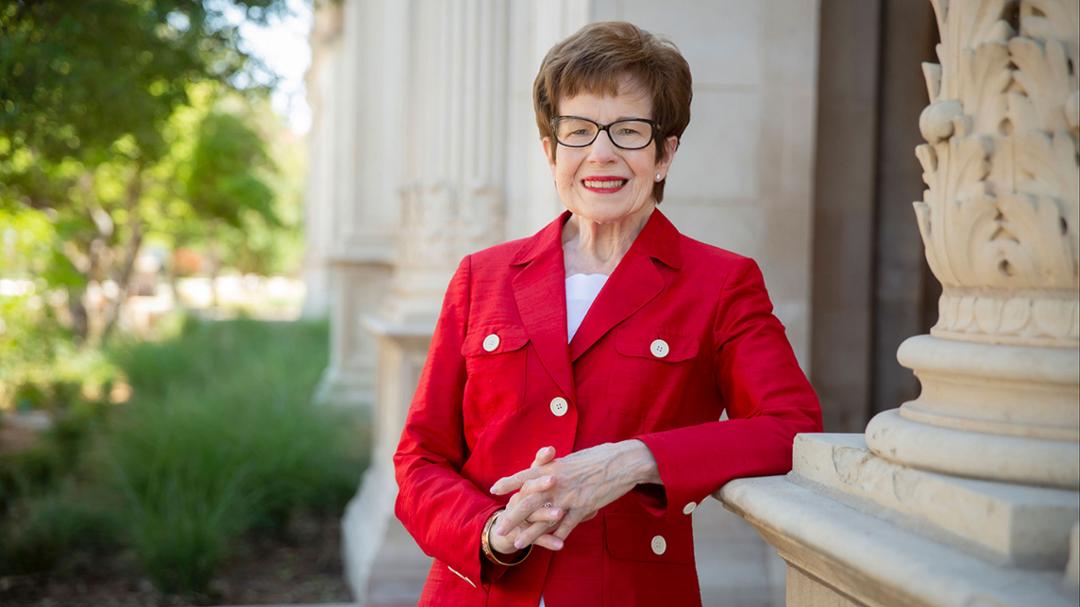Through many roles, Haley’s dedication to making Texas Tech a better place never changed.
Elizabeth G. "Bess" Haley was born in July 1944, into a world where women were no longer just homemakers – throughout the country, they had stepped out of their kitchens to fill the jobs left open by men enlisting for World War II. So it was only natural to her that women could have meaningful careers.
"When I went to college, my father said, 'You can major in anything you want to,' – now this takes you way back – 'but as a woman, you need to take some business courses, and you need to get a teaching certificate,'" she recalled. "He wanted me to take what he called 'bookkeeping,' which is really accounting; and typing, which is now computer keyboarding; and shorthand, which is now no longer taught."
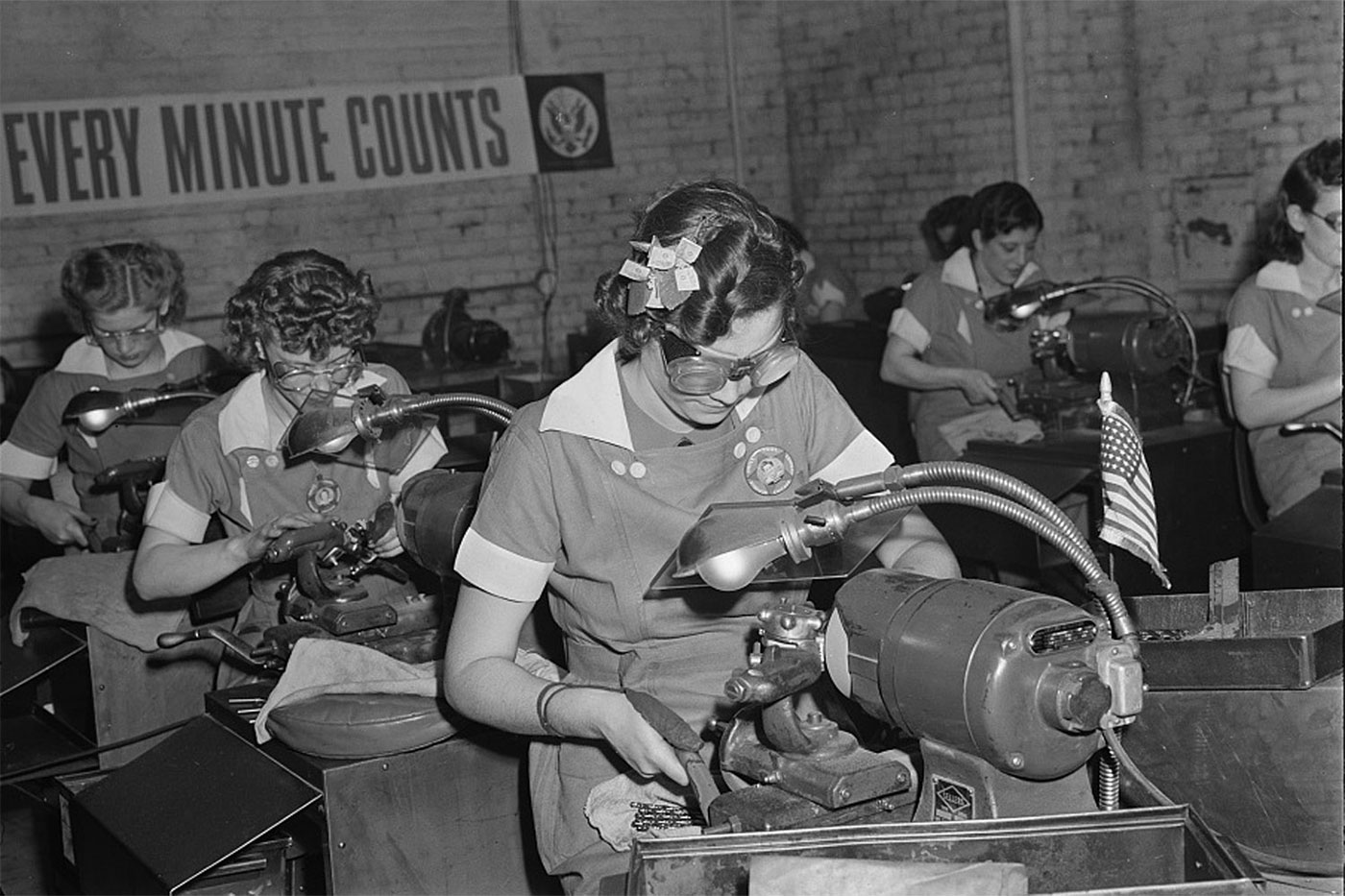
Little did either of them know how prophetic his advice would be in the tremendous career that awaited her.
A trailblazer from early on, Haley recently retired as the only woman at Texas Tech University to serve as a professor, a college dean, an interim president and a deputy chancellor for operations, but being a woman in those positions isn't what makes her special. Rather, it's the levels of success she achieved in those roles and the impact she had. Haley became a dedicated fundraiser for academics and the arts and made an indelible mark in the process – both on the students she taught and on the university she served. But she's the first to say she didn't do it alone.
"I don't know what my legacy is," she laughed. "Hopefully I have lived a life that has contributed to the wellbeing of Texas Tech, to the community, to our national and international reputation and to the students and colleagues with whom I have been honored to work."
Early education
After spending her childhood and adolescence in Homer, Louisiana, Haley set off at age 18 for Louisiana Tech University, just 45 minutes down the road in Ruston. She didn't know at first what she wanted to study and considered medical school like her two older brothers, but they advised against it – they said women weren't treated very well in medical school at that time, although Haley is proud to have two granddaughters who are doctors now.

In high school, Haley had been involved in Future Homemakers of America – a national organization that would later be renamed the more appropriate Family, Career and Community Leaders of America – and thought home economics (now human sciences) might be a good field. She wanted to teach, like her parents. While getting her bachelor's degree in home economics, she realized she wanted to teach at the college level.
After earning her bachelor's degree in 1966, she headed to Florida State University and earned her master's degree in textile science two years later. Armed with her master's degree and the teaching experience she gained as a graduate assistant, she took an instructor position at Northwestern State University in Natchitoches, Louisiana, followed by an instructor position at Louisiana Tech, where she also served as director of the Child Development Research Center.
Almost immediately, and without fail, people asked her when she was going to get her doctorate. So, after a year at Louisiana Tech, she took a leave without pay and went back to Florida State to secure her Ph.D. in child development and early childhood education.
While working toward her doctorate, Haley became acquainted with a number of Texas Tech faculty members from various human sciences fields who were at Florida State for the same reason. One particularly close Texan friend earned herself the nickname "The Bluebonnet Queen" because she spoke so frequently of her home.
College leadership
Once Haley received her doctoral degree and returned to her teaching position at Louisiana Tech, she got busy with her day-to-day responsibilities and didn't think about Texas Tech again for several years. She worked her way up through the ranks, from assistant professor to associate professor, professor, then associate dean. When the dean retired, Haley became the interim dean for eight months. Having just turned 31, she was named the dean of the College of Home Economics.
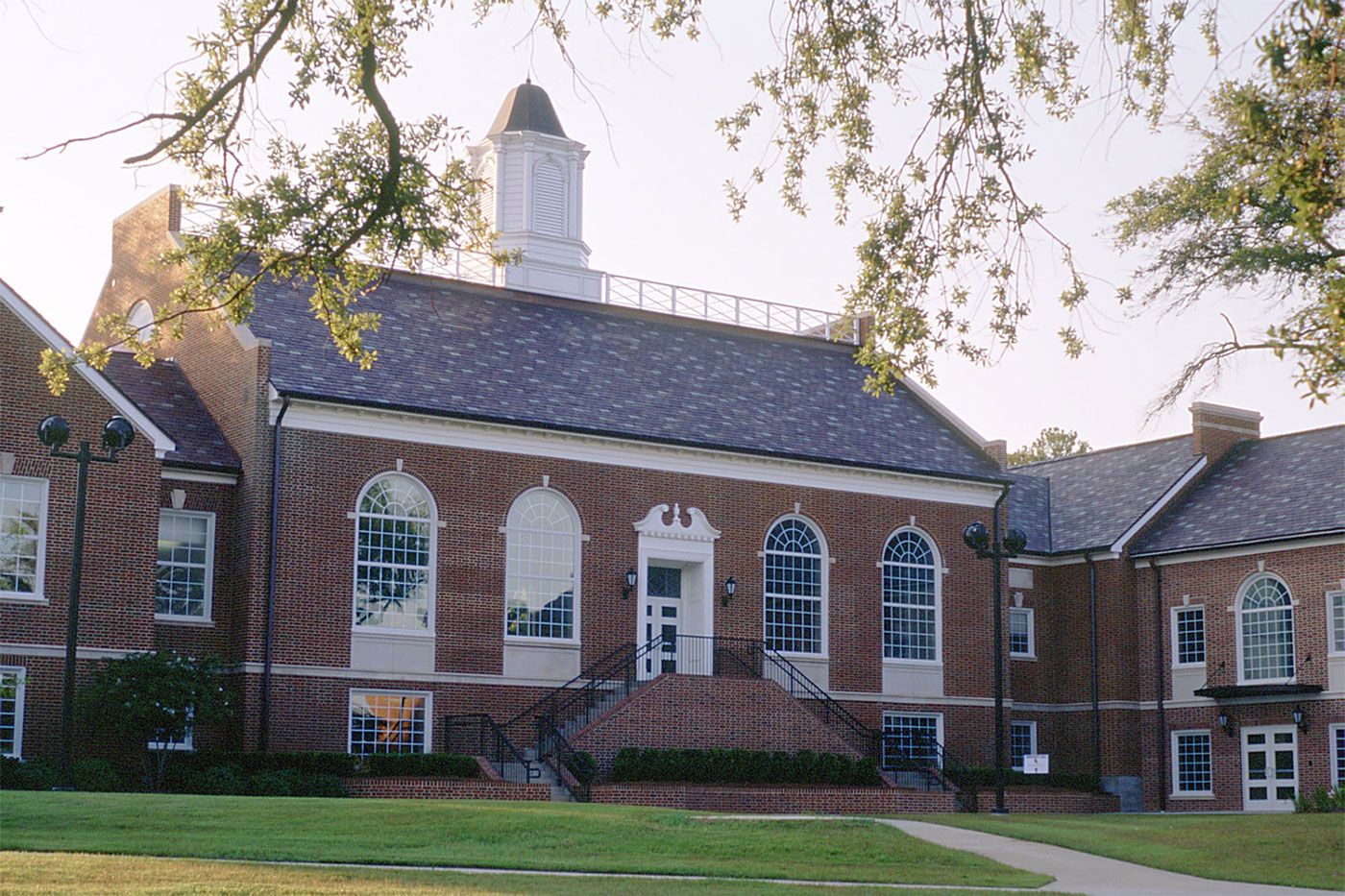
"I was rather young," Haley allowed.
"Our business manager in the dean's office had served in the role when I was a student. When parents brought their children to the dean's office to discuss enrolling at Louisiana Tech, they often assumed my assistant was the dean and I was the assistant," Haley laughed. "My assistant would say, 'Well, I think you need to be talking to Dean Haley.' And they would all look like, 'Oh! OK.'"

While dean at Louisiana Tech, Haley got the nickname that would follow her for much of her career: "The Iron Magnolia."
The College of Home Economics, which housed the Child Development Research Center and the child development program, and the College of Education, which handled elementary education, were squabbling over who should offer the early childhood education program and handle the certification for that field. Haley made her case that the College of Home Economics should be responsible for the program during the early years, in collaboration with education, so the teachers who were certified would have outstanding experience with younger and older children for a broader type of certification – and she won.
"After that," Haley laughed, "people said, 'Well, she may seem like a sweet magnolia, but really, she's made of iron.'"
It was a quality that would serve her well.
Coming to Texas Tech
One of Haley's brothers was a doctor in Ruston, and her parents had moved there from Homer, so it soon became Haley's home – and she had no plans to go elsewhere.
"I thought it would be terrible to leave them after they'd moved there, so I had turned down a lot of opportunities to apply for other jobs after I'd been dean for a while," Haley said.

"The dean from Virginia Tech came up to me at a national conference and chastised me for not applying for her position when she retired. I said, 'Well, I don't think I've completed all my goals at Louisiana Tech.' Louisiana Tech is a really good academic school, but it is smaller than these other institutions. The Virginia Tech dean said, 'You just can't stay there, you've got to go. You must think bigger.' After that, the next invitation to apply I received was from Texas Tech."
The letter arrived right before Christmas 1980, so Haley broached the subject at her family's holiday gathering, expecting them to tell her she shouldn't go.
"They said, 'Well, why don't you go check it out? You might as well,'" she recalled. "But if I'm going to go check something out or try to understand a place, I want to read up on it and know as much as I can. So that's what I did."
She asked her old friend, the Bluebonnet Queen, about Lubbock. She was told to imagine driving around Ruston – with its tall pine trees, rolling hills, blooming plants and crape myrtle trees of all colors – and instead imagine it perfectly flat and with no trees.
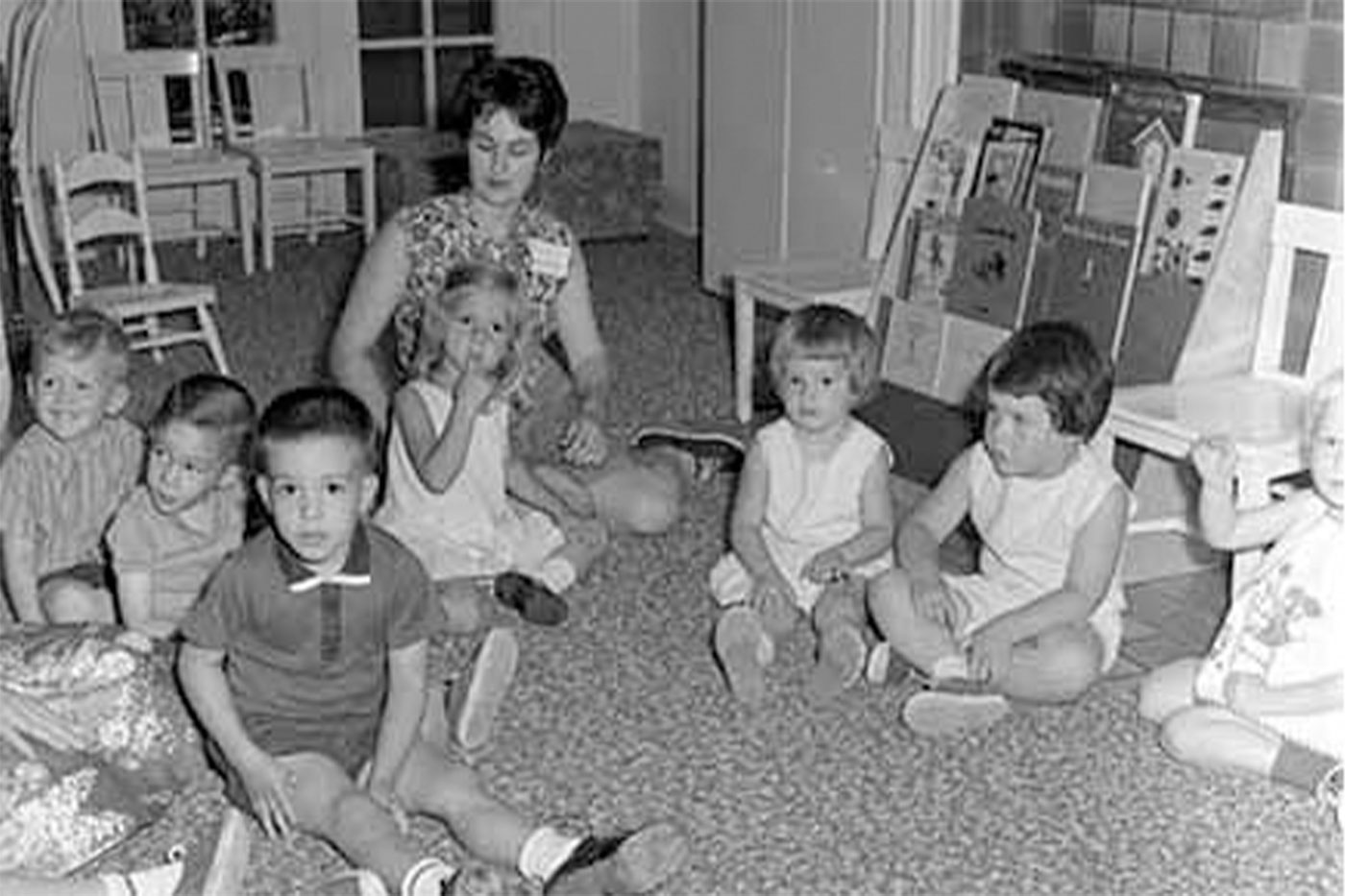
"So, for several days, I tried to imagine what that would be like – it was hard to imagine exactly," Haley said. "When I flew to Lubbock in February, I was sitting by the window. I looked down, and it was flat and brown. I don't know what approach we took to the airport, but it must have been the most remote one. I looked out at all these fields that were not planted yet, and there was one house with windbreak trees around it. And I thought, 'Oh my goodness, this is rural, isn't it?'"
Once she got into the city, she noted, she was impressed by the trees and the beautiful campus. As part of her visit, Haley gave a presentation to a group of Texas Tech faculty in what was then the College of Home Economics – now called the College of Human Sciences.
"I spoke about their program and their statistics – their enrollment had been going down – and the potential they had, and I compared them with some of the other national schools in our field, like Cornell University, Virginia Tech, Purdue University, University of Georgia," Haley recalled. "Some of the faculty still talk about it, who were there at the time. They said, 'You told us things we didn't even know about ourselves.' So I don't know, I guess that impressed them."
Haley was selected as the new dean of the Texas Tech College of Home Economics.
A new beginning
Although her family was still in Ruston, once Haley arrived in Lubbock, she never really intended to leave again. But she wasn't here long before she began to realize the magnitude of the tasks ahead of her.
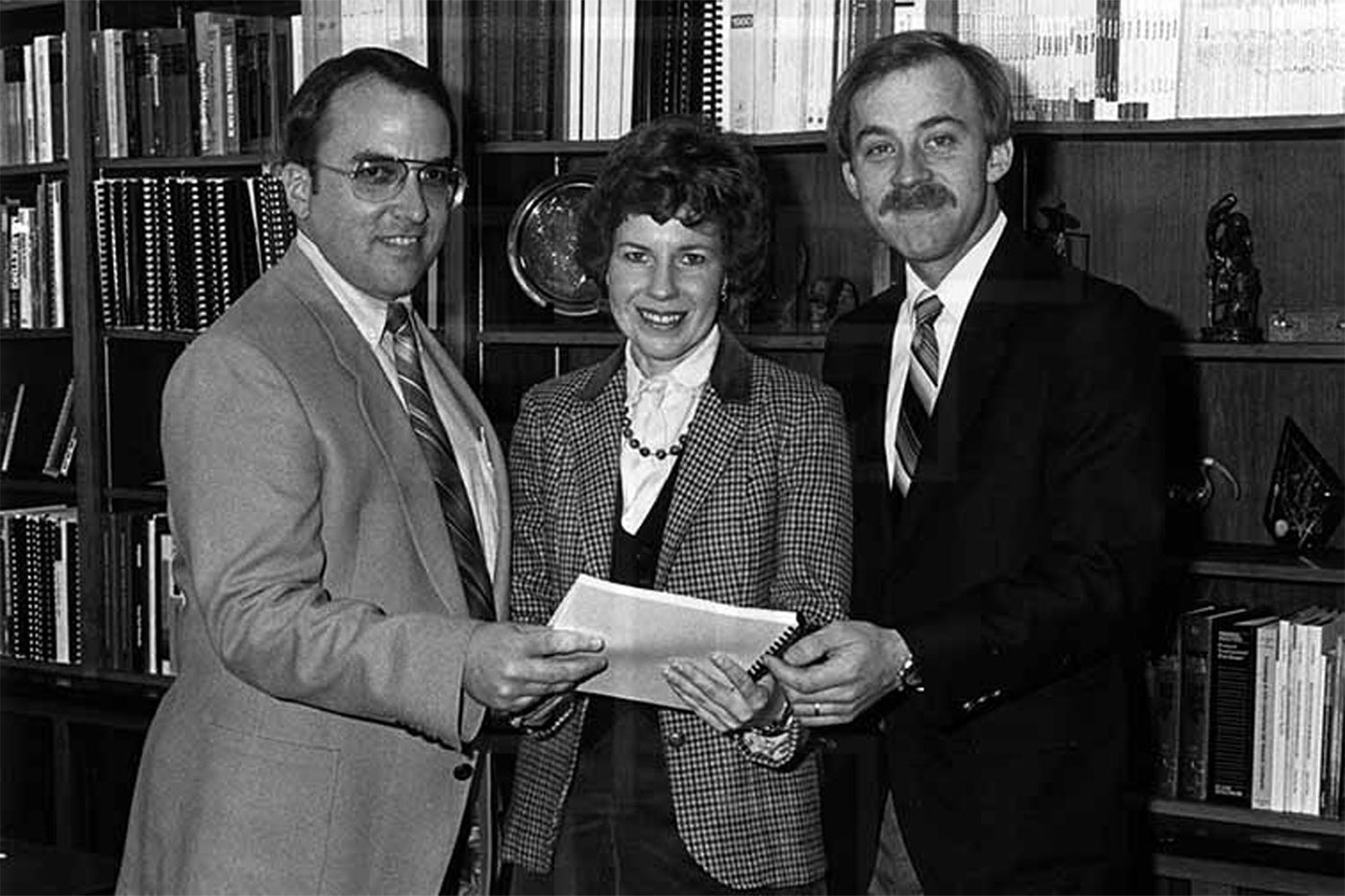
"I realized there were maybe more problems in the college than I realized," she admitted. "There were some significant things to get through to build the enrollment and do all these things. But I'd already laid out some plans, the faculty accepted those, and we pursued those directions, adding new programs."
Among them were the Restaurant, Hotel & Institutional Management program and later the Center for the Study of Addiction Recovery, now called the Center for Collegiate Recovery Communities. Then came a program in gerontology and one in financial planning. Along the way, Haley and the faculty also worked to strengthen the existing programs.
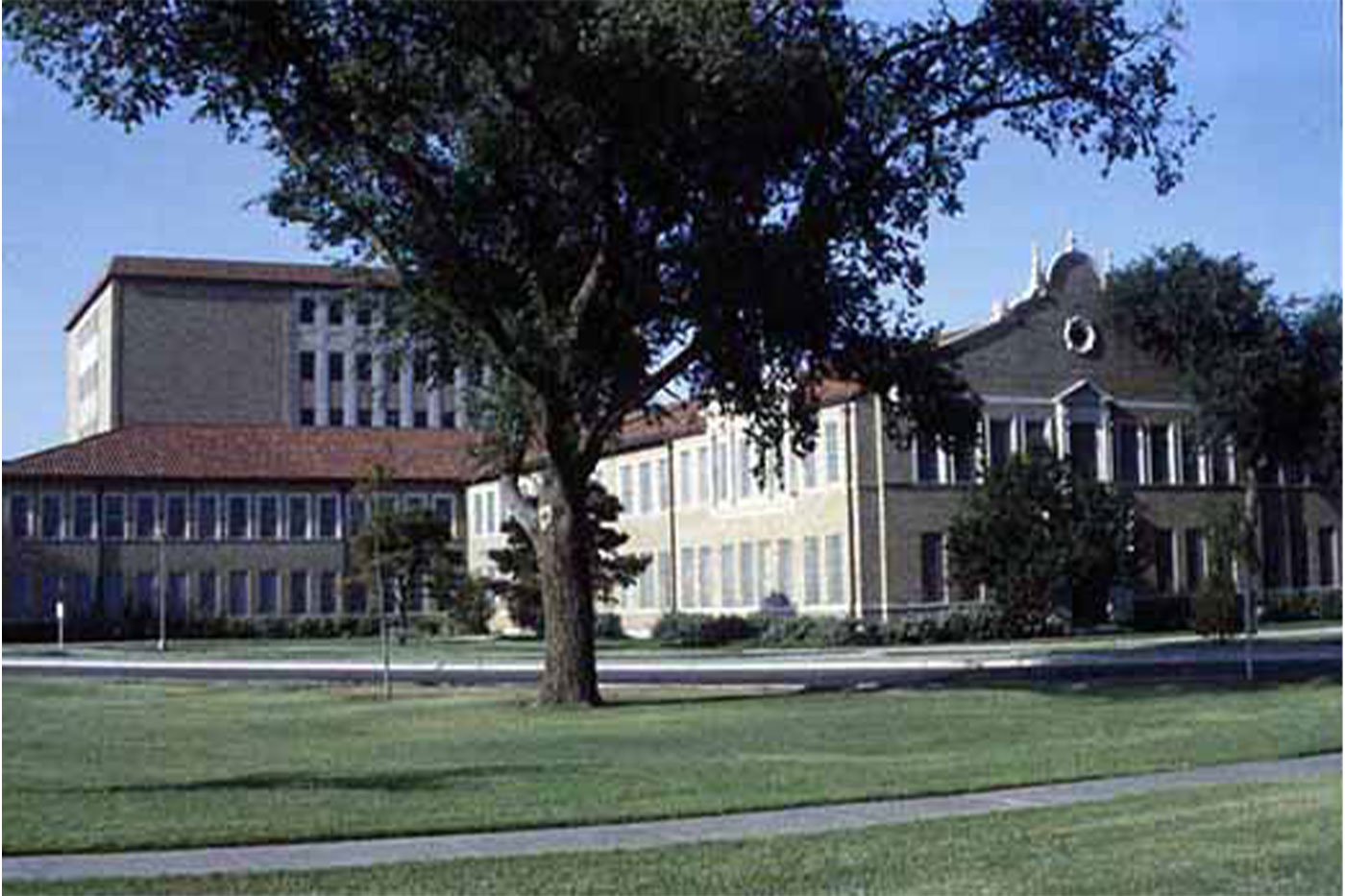
"The enrollment really took off, particularly when we added the Restaurant, Hotel & Institutional Management program," Haley said. "With support of most faculty and alumni, we changed the name to 'Human Sciences.' We weathered through the difficult times, and the enrollment increase was very helpful.
"And then I realized we had no money."
Haley wanted to offer scholarships but couldn't. Looking at some of the other colleges on campus, she noticed that the College of Engineering and the College of Business Administration had greater resources: they were able to recruit students and award Distinguished Alumni programs.
"I remember when we wanted to bring students to the campus to meet faculty and hear about the programs, we didn't have any money for things like refreshments – Cokes and cookies – and it was embarrassing," she said. "So, I asked the other deans, 'How are you doing this?', because we couldn't use state funds. They told me they had raised the money, so we organized a Dean's Advisory Council and started raising resources.
"We established a vivacious Dean's Council that helped us. We began to raise money, and we got pretty successful."
Making changes
When Haley arrived, the college's endowment was only $230,976, which meant it was able to award only 30 scholarships a year, totally $14,000. Over Haley's tenure as dean, the group grew the endowment to more than $24 million, which supported to $340,000 in annual scholarships. They also raised unrestricted funds to market the college and establish a Distinguished Alumni program.
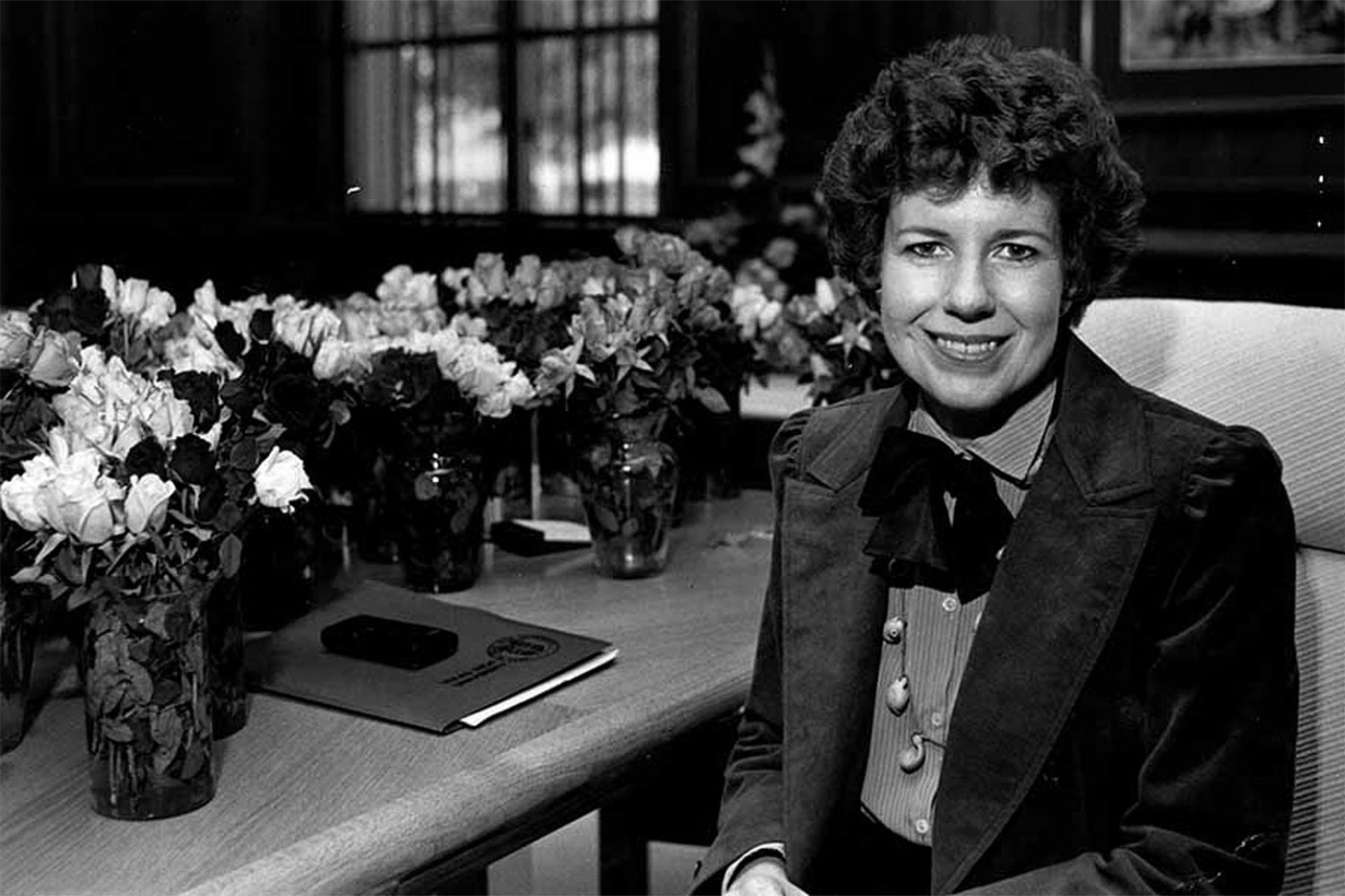
"Bess Haley has done a complete turnaround for the Home Economics College," said Pauline Bean, an alumna of the college and a member of the Dean's Advisory Council, in a July 1988 Lubbock Avalanche-Journal article. "It was as dead as a doorknob. People were leaving. Alumni were turned off. Bess walked in, and it was just like raising a window shade and letting the sun shine in.
"She looks like a fragile flower – a real southern lady, but she's just as tough as they come. She's running the show, and we all admire and respect her for it."
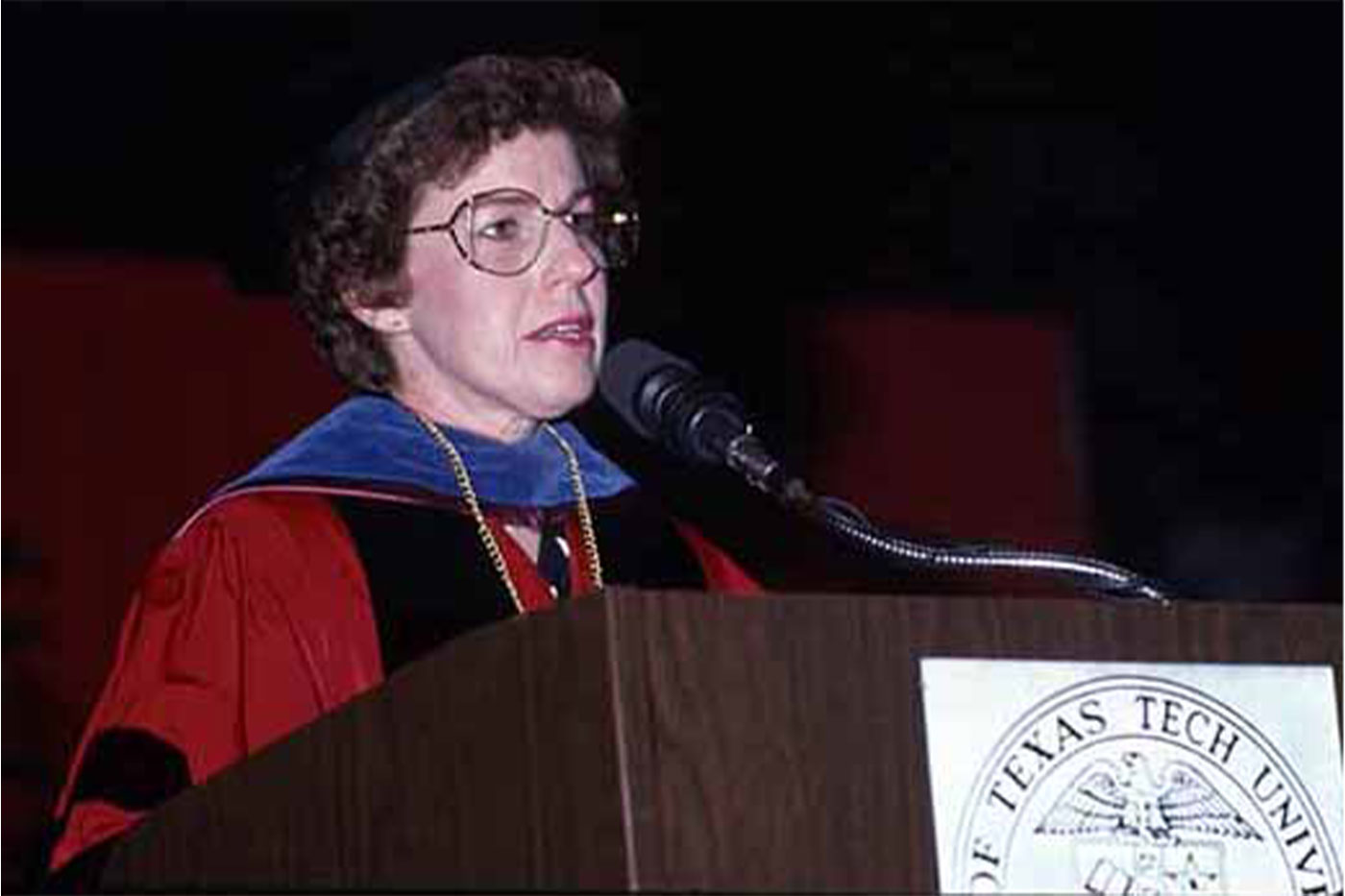
Along the way, the college earned accreditation from seven specialized organizations for its different disciplines, as well as an overall group that accredited the College of Home Economics as a whole.
One problem they faced, however, was a general misunderstanding of what home economics was.
"People thought we were just cooking and sewing and that kind of thing, and we were not," Haley said.
That misunderstanding led a pair of seniors in the college to organize a home economics awareness week during Haley's first year. That same push for awareness drove the eventual name change from the College of Home Economics to the College of Human Sciences, which became official on March 1, 1993.
Taking the reins
In 1988, then-Texas Tech President Lauro Cavazos was appointed U.S. Secretary of Education, leaving open the university presidency. During a special meeting of the Board of Regents on Sept. 2, the board voted unanimously to appoint Haley as the interim president, making her the first female to hold presidential duties at Texas Tech.
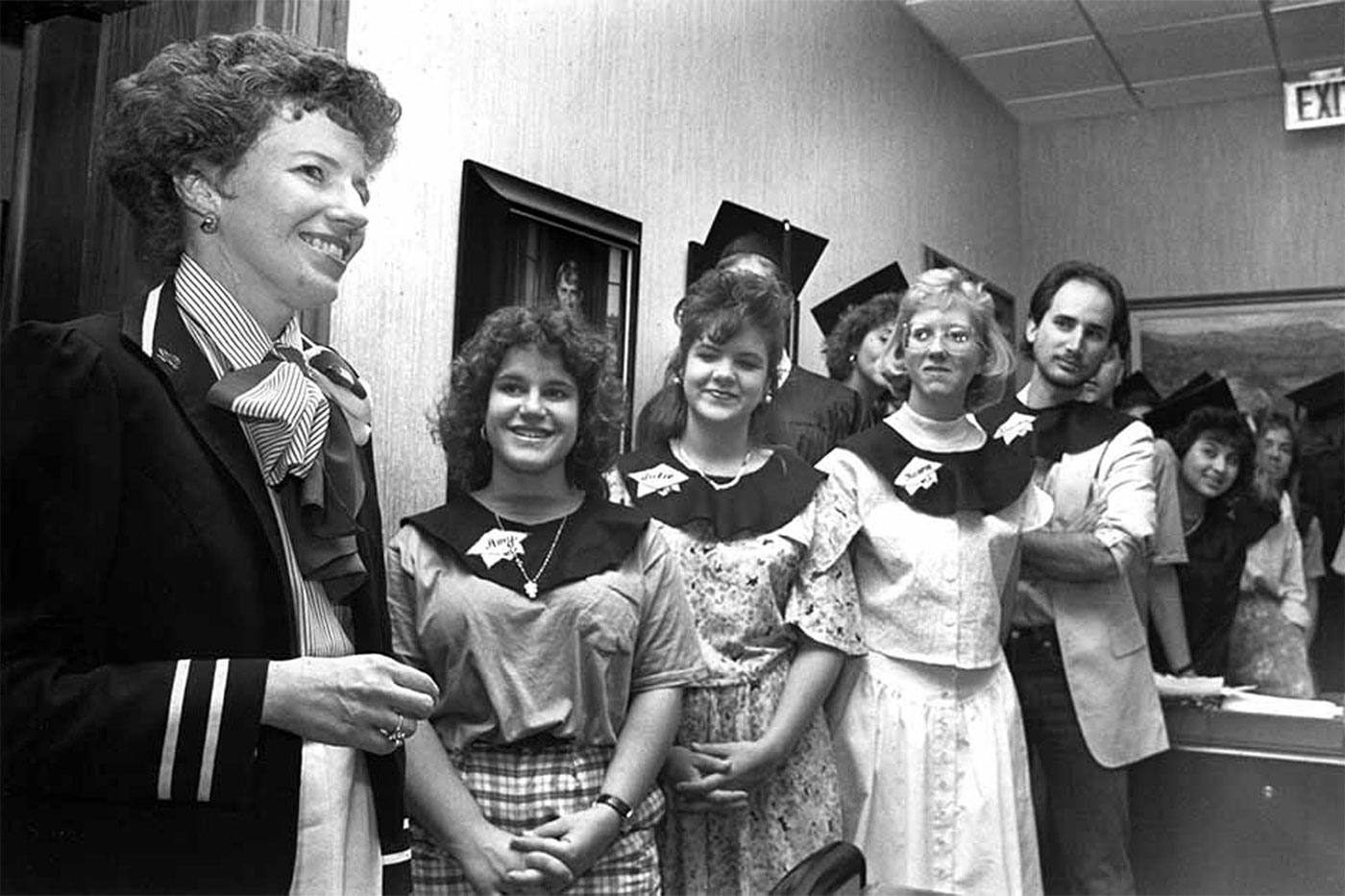
Technically, Haley became Texas Tech's third female interim president. However, the first two – Mrs. F. N. Drane in 1932 and Mrs. John A. Haley, no relation, in 1938 – were appointed exclusively "for the purpose of signing diplomas," as stated in the board minutes. In Haley's appointment, by contrast, she was given the full job description of any other Texas Tech president: the authorization to sign all financial applications, contracts, agreements, reports, resolutions and transactions; to sign research applications and contracts; and to approve official travel reimbursement and other authorized expenditures throughout her time in the office.
At that time, the president served as head of both Texas Tech University and the Texas Tech University Health Sciences Center (TTUHSC), which did not become separate institutions until the creation of the Texas Tech University System in 1996.
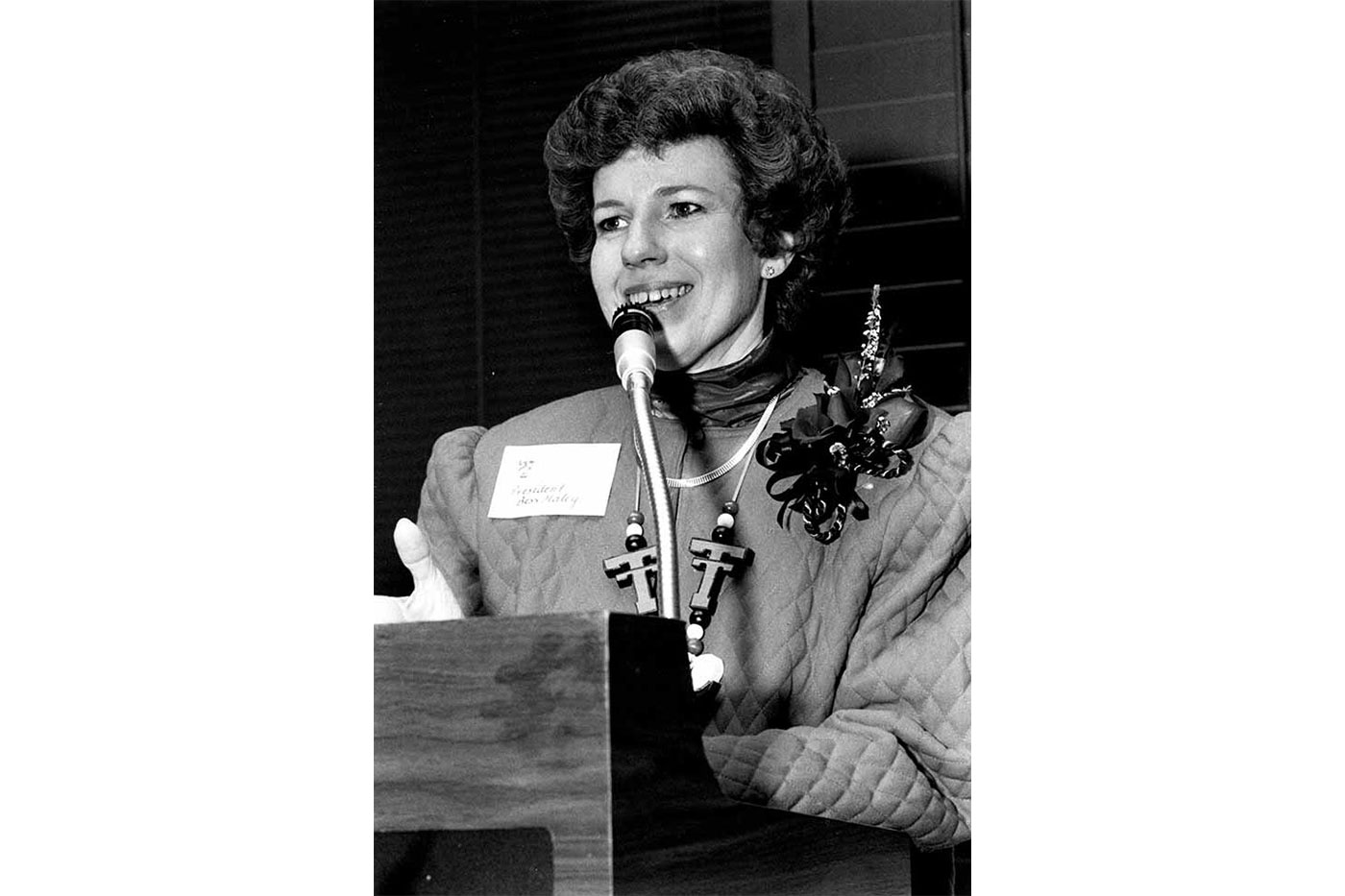
In addition to having to lead an institution of higher learning with a wide variety of disciplines, she also had to take charge of a teaching hospital. She said she couldn't have done it without the help of many people, chief among them, retired Lt. Gen. Dr. Bernhard Mittemeyer, who had come to teach at the TTUHSC following four years as Surgeon General of the U.S. Army. By 1988, he had become the Executive Vice President.
"I have always considered Dr. Haley a very professional and outstanding administrator, leader and executive, in whatever role she was in," said Mittemeyer, now professor emeritus in the Department of Urology. "As interim president, she was very supportive of us in the Health Sciences Center – and in our early years, as we were then, that support was very important.
"Working for somebody above you, you always want somebody who will listen and try to understand. In the Health Sciences Center, we had issues she would not normally have had experience with, but I was impressed by her right from the get-go. She listened, and when she spoke, she made sense. She was a true leader and, in my opinion, a very fine person."
It was a legislative year and, as interim president, Haley had to plead the university's case for funding to the Texas Legislature. On the day of, the presidents of the University of Texas and Texas A&M University requested different time slots, and Haley unexpectedly had to go first. She admits she felt intimidated, but because her duty was so important, she collected herself and gave her presentation, trying to appear calm and cool, despite the fact that her hands were shaking and her palms sweating.
After her nerves, it was quite a morale boost when each subsequent university president then stood up and said in their speeches, "As Dr. Haley has said..." All that aside, she said, Texas Tech got the funding it needed, which made the whole ordeal worth it.
In addition to the duties Haley knew about when stepping in as interim president, one came as a surprise.
At that time, Texas Tech was part of the Southwest Conference for athletics. The nine member universities had worked out a rotating schedule in which the president of each university would serve as chair of the conference for one year. As it turned out, that year was Texas Tech's turn.
Haley initially was taken aback, but quickly decided she could do it, if then-Athletic Director T. Jones and the various coaches could help her understand her responsibilities and provide guidance.
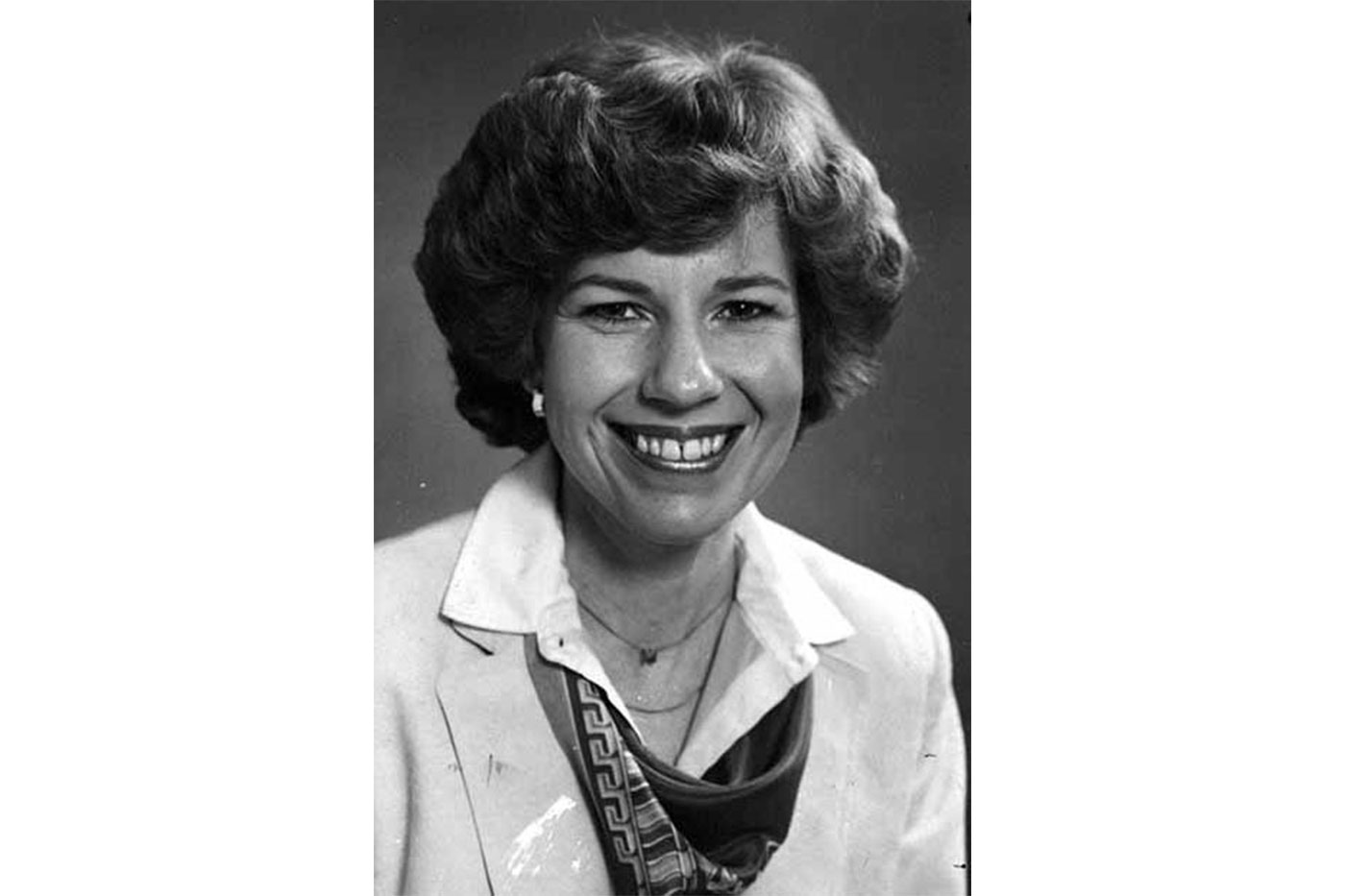
"I think knowing that you can ask for guidance and learn from it is an important accomplishment," she said. "Some people always want to know everything themselves. But, you know, I would have not made it."
Looking back on her time as interim president, Haley says it wasn't so much a sense of pressure she felt – it was more determination to do it right.
"As interim president, I think I was trying to handle that first opportunity for women in such a way that other women would be respected and considered for the position later," Haley said. "While we have not had a woman yet as a regular president, I hope we will in the future. I don't think we're just ruling them out anymore, and they probably were at one time.
"I hope people think I did an acceptable job or, hopefully, an excellent job, and it builds confidence that other women can do the same. There are a lot of women who are probably even better prepared than I was, and our regents need to consider those women, whether they're women from here or women from other institutions."
Post-presidency
After new President Robert Lawless took office on July 1, 1989, Haley returned to her position as dean of the College of Home Economics.
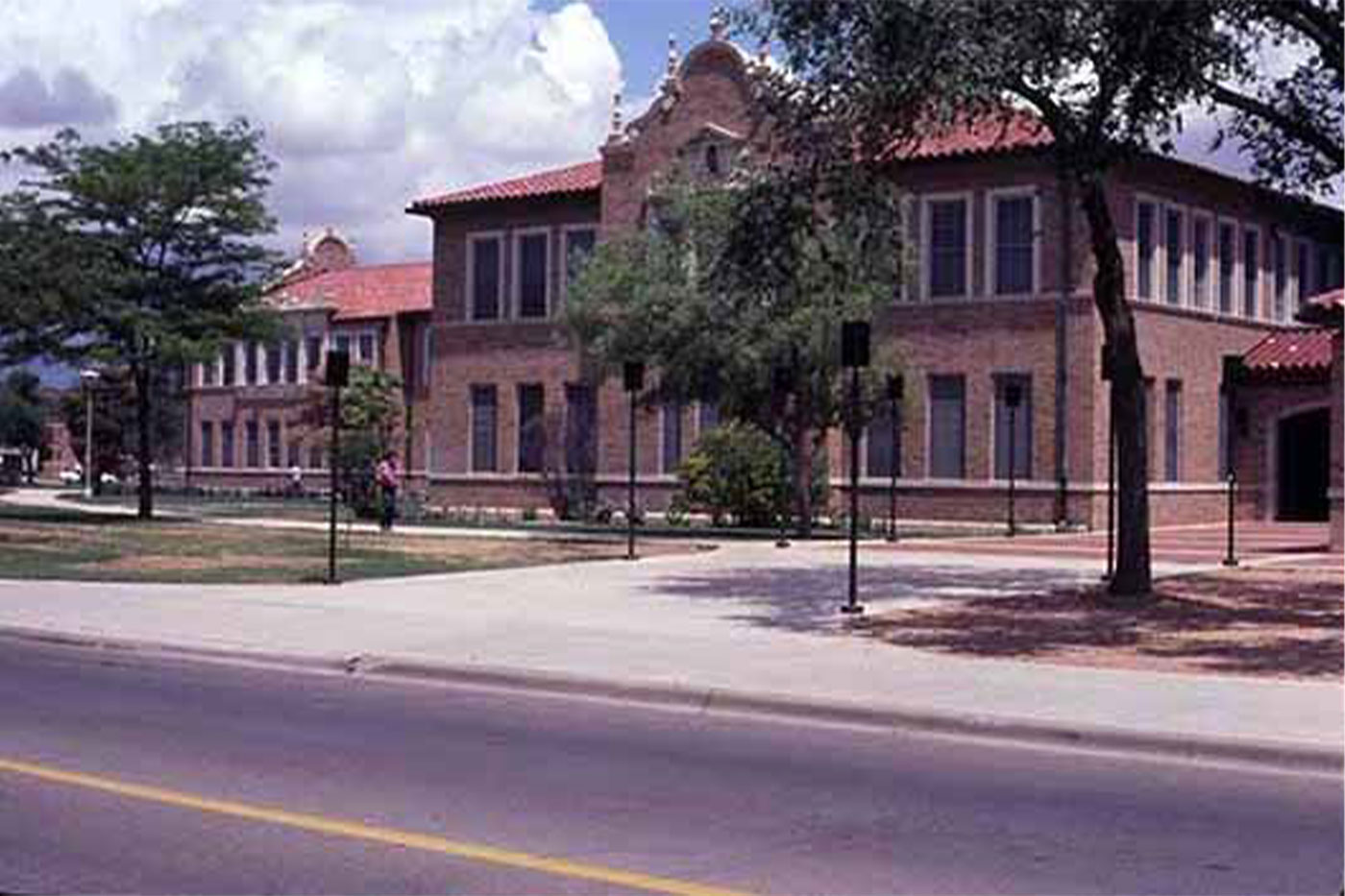
She married Glenn Jones in May 1995, and in 1996, was one of three finalists to become the first chancellor of the newly established Texas Tech University System. The Avalanche-Journal reported the likelihood that one of the three would become chancellor and another would become the university's new president. Ultimately, former state Sen. John Montford – who had proposed the creation of the Texas Tech University System in 1985 – was named chancellor and then-Interim President Donald Haragan was named president of Texas Tech.
Haragan first worked with Haley in 1985 when he was appointed vice president for academic affairs and research and she was serving as dean.
"Until her appointment as interim president, she reported to me," said Haragan, now president emeritus and a professor in the Department of Geosciences and the Honors College. "When she assumed the role of interim president, our roles were reversed and I reported to her. But we always worked with each other and not for each other. It was always my good fortune to have her as a close colleague."
Although both previously had served as interim president, Haragan said there was no ill will between Haley and himself when he was named president.
"As far as Bess is concerned, she was always ready to accept any role in which she could serve the university," Haragan said. "Dr. Haley is a dedicated professional who has served Texas Tech for many years and deserves a significant share of the credit for the institution's advancement."
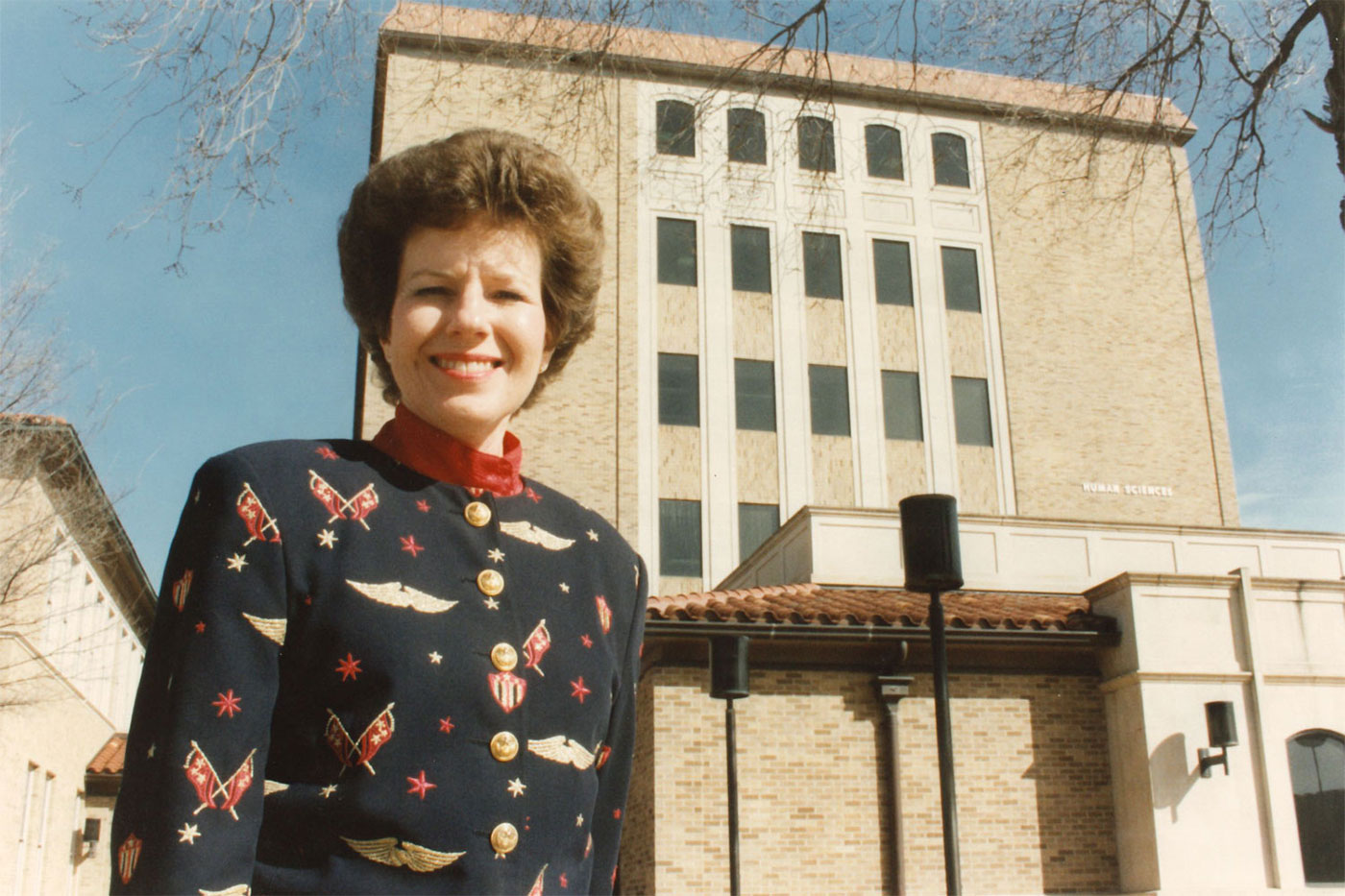
In January 2001, Montford appointed Haley as interim deputy chancellor for operations for the System – a wide reaching position that oversees system development, Institutional Advancement, news and publications, government relations and economic development. With her background in fundraising by that point, Haley was ready for the task.
One of the biggest challenges during that time was the System's first major capital campaign, called the Horizon Campaign, which aimed to raise $500 million. By the time the campaign ended in the summer of 2001, it had raised $511 million. After such a grueling six months as the interim deputy chancellor for operations, Haley had obviously proved her worth. She was named to the position permanently in July.
But it would be short lived.
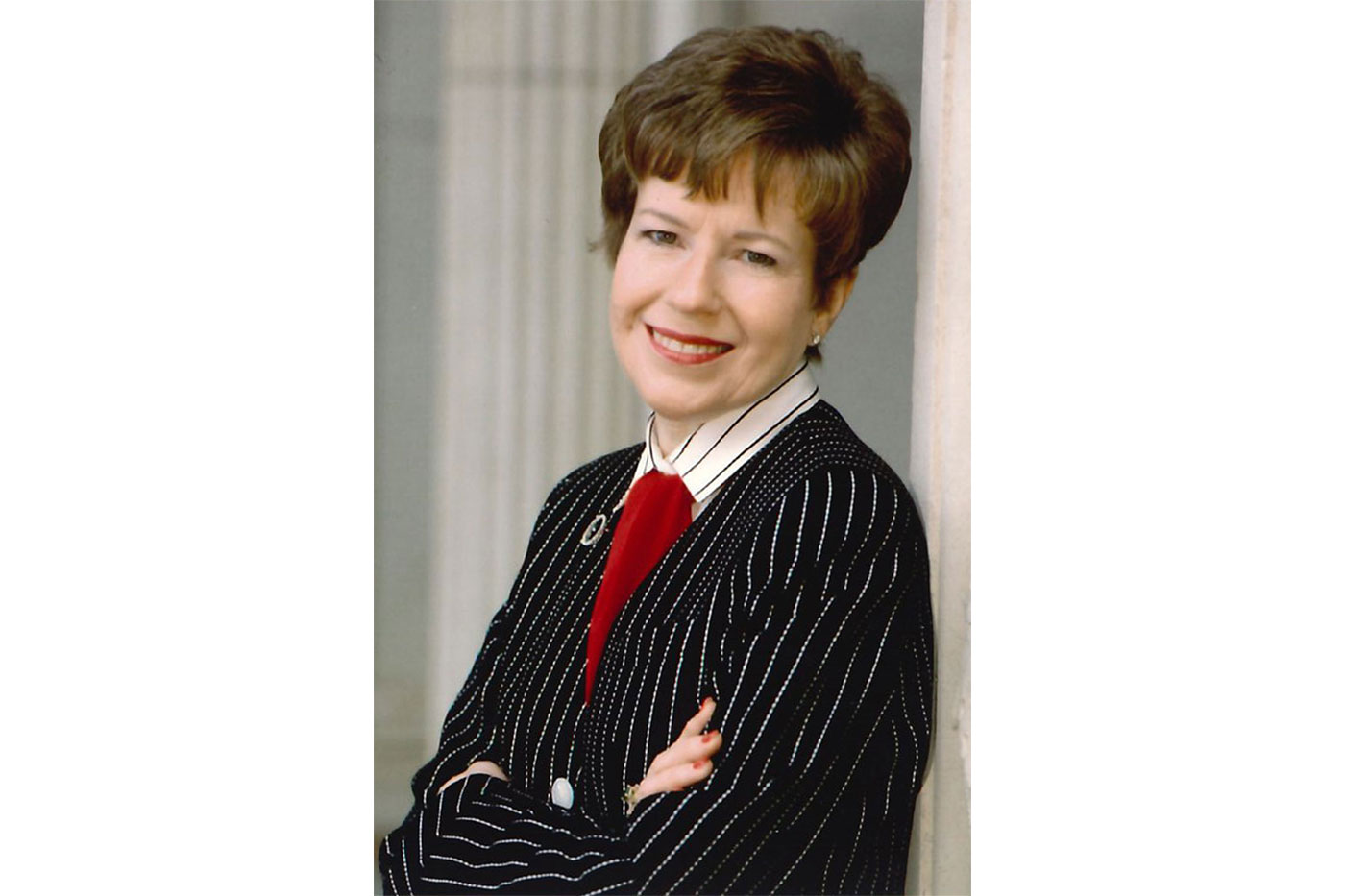
In September, Montford resigned as chancellor. He was replaced on an interim basis by David Smith, who had been president of TTUHSC since 1996. Haley continued in her role until Smith officially was appointed chancellor in May 2002.
"When he became the chancellor, he wanted to appoint his own people, which is expected," Haley said. "So at that point, I went back to Human Sciences to teach, which is where I started off in the beginning. But it was a little harder to teach that year, because I'd been away from the classroom so much."
Double duty
Haley found that during her administrative years, a lot had changed in the classroom.
"We were now using the computers to report the grades, and the students said, 'Well aren't you going to give us your notes?' We never did that earlier," Haley explained. "The students were interesting; they wanted everything posted on the computer, and so I had to learn to do all that. So learning the technology, again, was important – one must be willing to learn throughout life."
Because the college's fundraising efforts had grown so exponentially over the years, Human Sciences had, by then, hired its own development officer, but when that person left suddenly, Interim Dean Linda Hoover asked Haley if she would take on that role, too.
"So I taught a class on Monday night, and I worked in development for the college the rest of the time. Then I panicked and got ready for class," Haley laughed. "My husband said that was his worst experience, going through that year, because there were a lot of new things to learn. It consumed a lot of 'our' time.
"But during the time I served in that capacity, teaching and development, we raised most of the money for the Child Development Research Center."
A new opportunity
After a full year of Haley doing two jobs, the System hired a new Vice Chancellor of Institutional Advancement, Mark Lindemood, in early 2003.
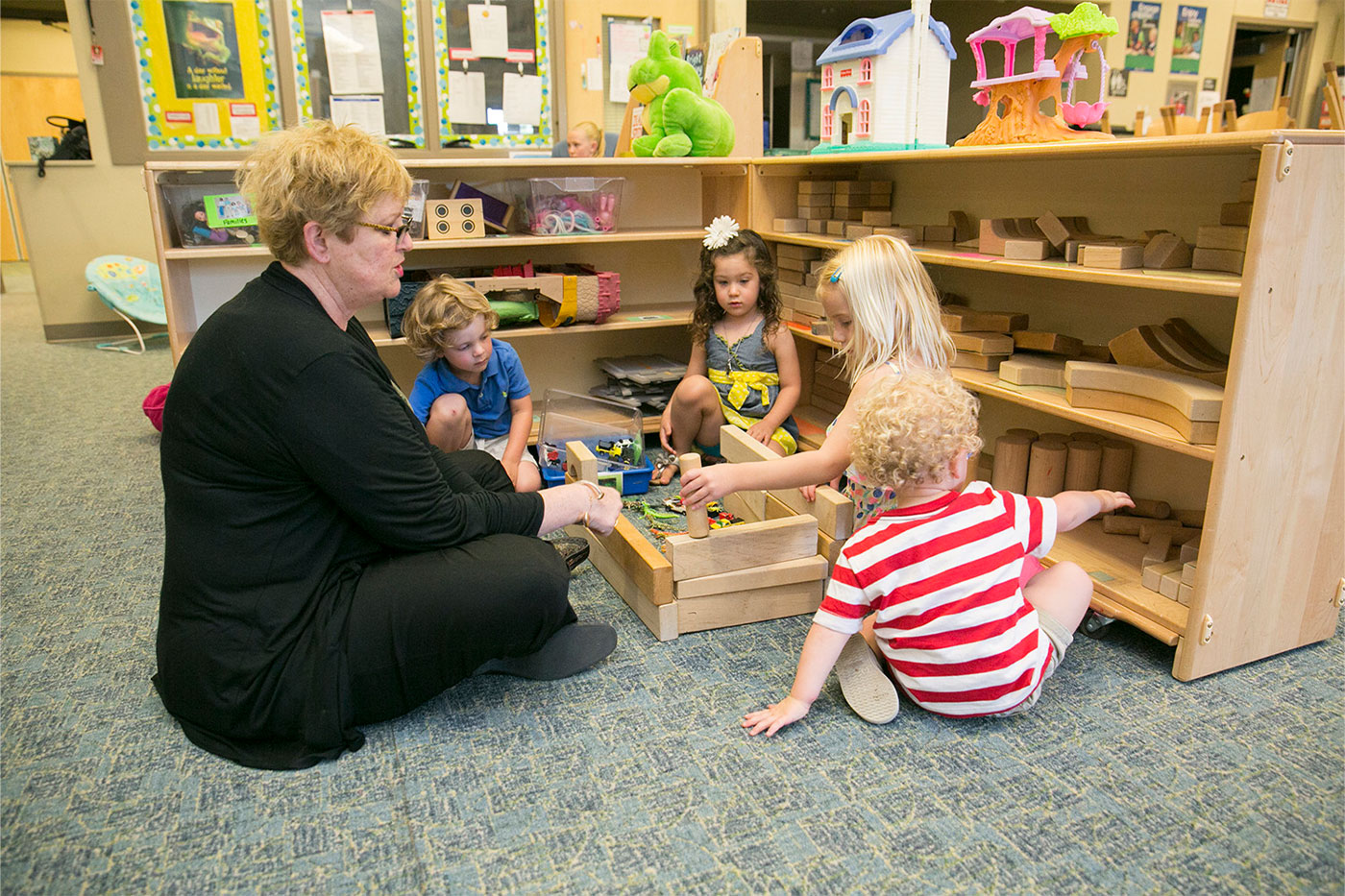
"I thought, he's going to feel strange that I was responsible for development as a part of my role as deputy chancellor, and now I am working part time as a development officer over this unit," she explained. "So I wrote him a note, welcomed him to Texas Tech and said, 'I just want you to know I'm over here now, and I'm enjoying this, but if I can help you in any way, let me know.'
"He came over and said, 'Oh, I do need help.' He didn't know anybody here and needed to get acquainted."
He asked her to serve on his administrative team. She said now-Dean Hoover found it acceptable, she would do it.
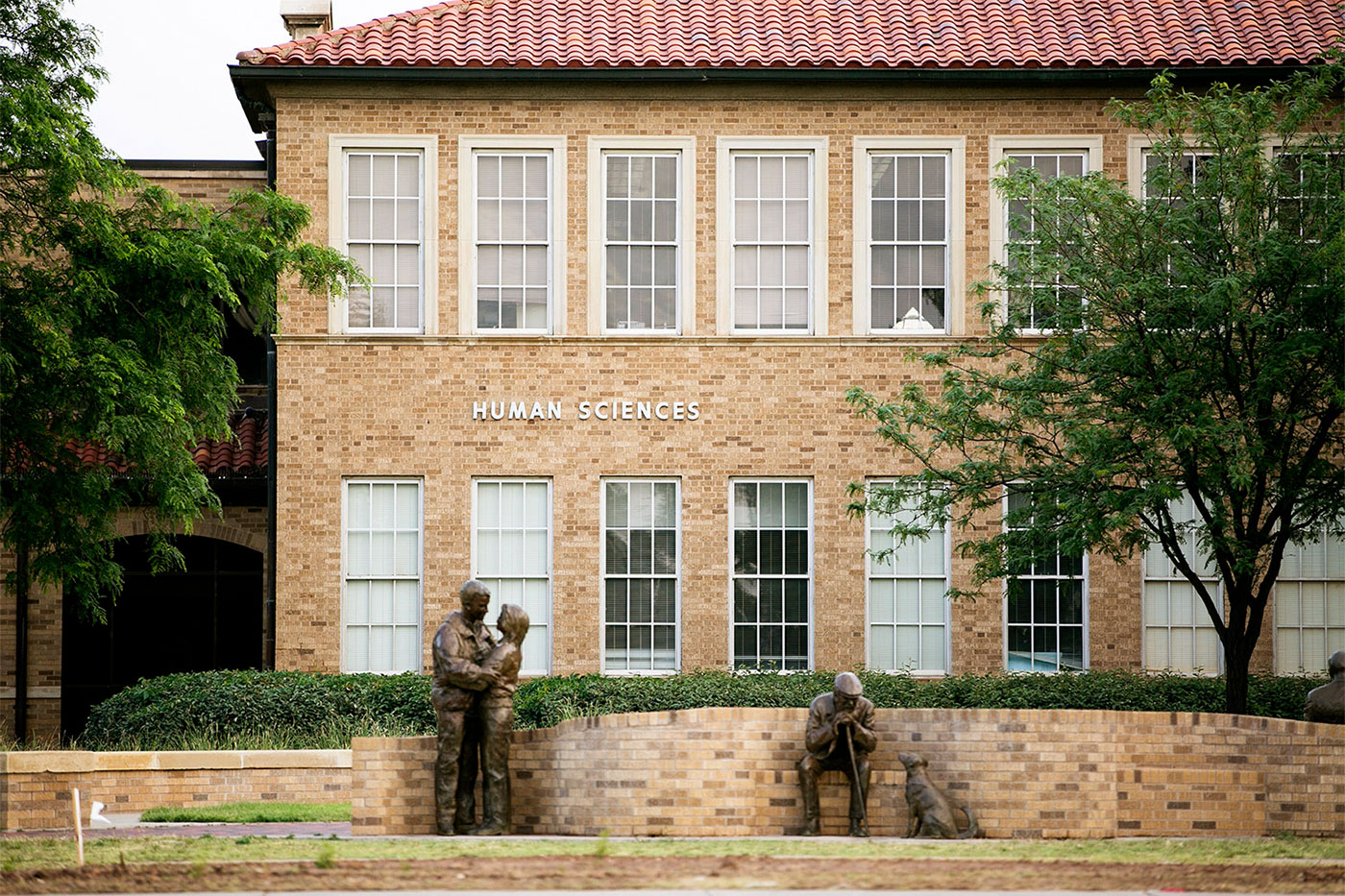
"So I assisted him, helped the college and taught the class," she said.
But after a few months, Lindemood asked Haley to move over and work in development full time. He wanted her to work with the college deans and development officers for a more coordinated approach that could benefit all the academic programs.
"My husband thought I was trying to do too many different things, and I did, too," she admitted. "So I thought, 'Well, I need to decide: am I going to go back and have a career teaching, or am I going to work in development?'"
On one hand, if she stayed in the classroom, she could really get on top of her subjects – child and human development, family studies and early childhood education – and she could achieve excellence in teaching. That would be rewarding, she reasoned, because she liked the students and could have an impact on their lives.
On the other hand, she knew the academic programs at Texas Tech needed more financial support.
"I finally decided that through Institutional Advancement, maybe that would have a greater possibility of impacting the university than working with students in a class, however many I was teaching," she said. "So I decided to move to Institutional Advancement."
Fundraising
For the next 11 years, in addition to helping the individual colleges, she also focused on major proposals for the chancellor, vice chancellor and president, including the Kent R. Hance Chapel in collaboration with then-Chancellor Hance, and the J.T. & Margaret Talkington Hall.
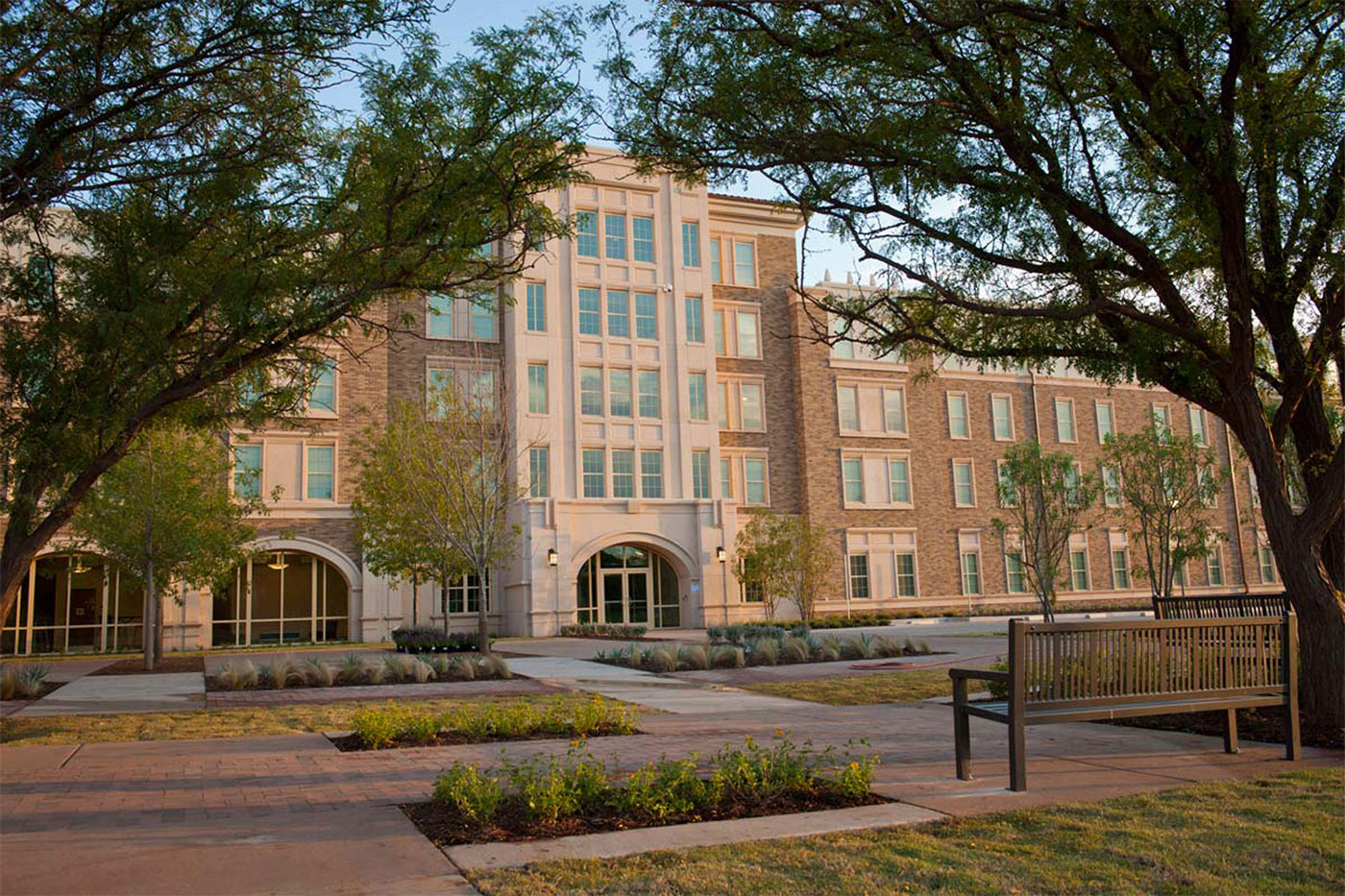
"The residence hall was built with bonds. The students living there would be paying residence fees that would pay off the building; however, the hall was a great naming opportunity," Haley said. "So we received a gift for $12 million to name the facility and, with donor approval, we used the money for fellowships, particularly graduate fellowships. There was a great need for graduate scholarships, so the donor agreed to that."
During that time, her husband was diagnosed with cancer.
"That last year or so was challenging as I tried to take care of him and work full time to complete significant projects," Haley said. "I did the best I could, but it was exhausting."
He died in July 2014, and Haley retired in August as they had planned.
"I was lost," she said. "After all this, and being at Texas Tech for so long."
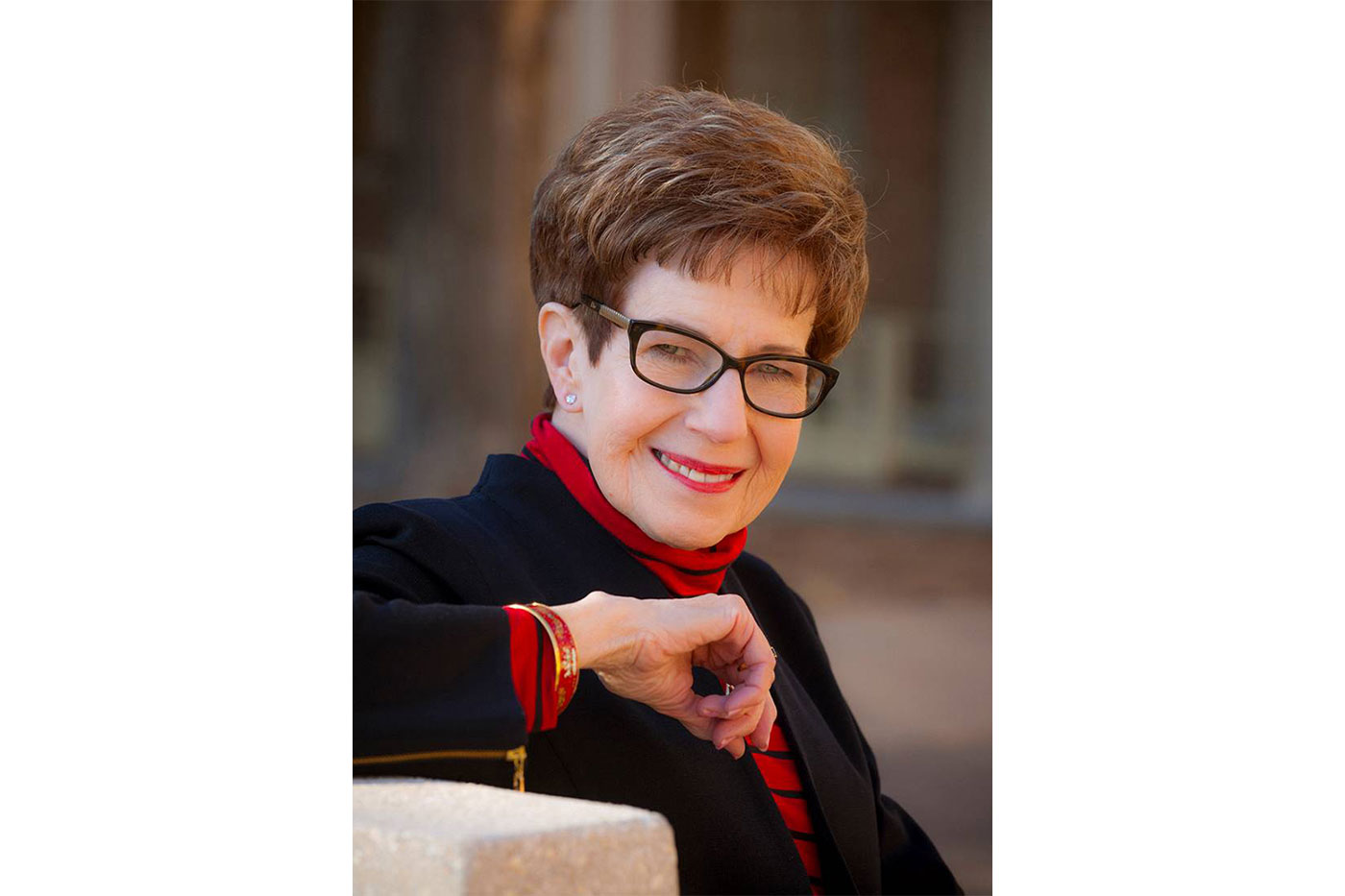
Then-Chancellor Robert Duncan offered her an open invitation to return, so she returned part-time in March 2015. It turned out, he had a very specific role in mind for Haley.
"He wanted me to work with the arts and the College of Visual & Performing Arts," Haley said. "We needed money for facilities desperately, so that was the top priority, although they needed scholarships, too. They've not had consistent development officers, and they've had a number of different deans turn over. So they needed consistency, and they needed help with fundraising."
Back to work
President Lawrence Schovanec pledged $10 million for the planned School of Theatre & Dance Complex, but Haley, Dean Noel Zahler and the team in Institutional Advancement needed to raise a matching $10 million before work could begin. They secured that donation from the J.T. & Margaret Talkington Charitable Foundation in 2016, and the college was renamed the J.T. & Margaret Talkington College of Visual & Performing Arts (TCVPA) because of the total gifts received from the Talkingtons and their foundation.
Other funds came from the Helen Jones Foundation and the project was approved for Texas Research Incentive Program (TRIP) matching, because students and faculty will be conducting research in theater and dance. The Theatre & Dance Complex, now under construction, is well on its way to becoming the facility the college needs.
Another part of Haley's role was to work with arts organizations in the community for more coordinated funding opportunities that could benefit them all, rather than competing with one another.
In collaboration with then-System first lady Terri Duncan, Haley reached out to the Lubbock Arts Alliance and the Lubbock Entertainment and Performing Arts Association (LEPAA), the nonprofit group building Buddy Holly Hall. Together, they formed a group called ARTS Lubbock.
"It is an organization of arts organizations," Haley explained. "We try to get representation from all of the arts groups, and we have more than 40. Most of them liked what we were doing and participated in some way. We don't get them all together all the time, because we're a volunteer group, but we try to select what are the important issues and work on them together."
Haley wants to specify, of course, that she didn't single-handedly achieve all this.
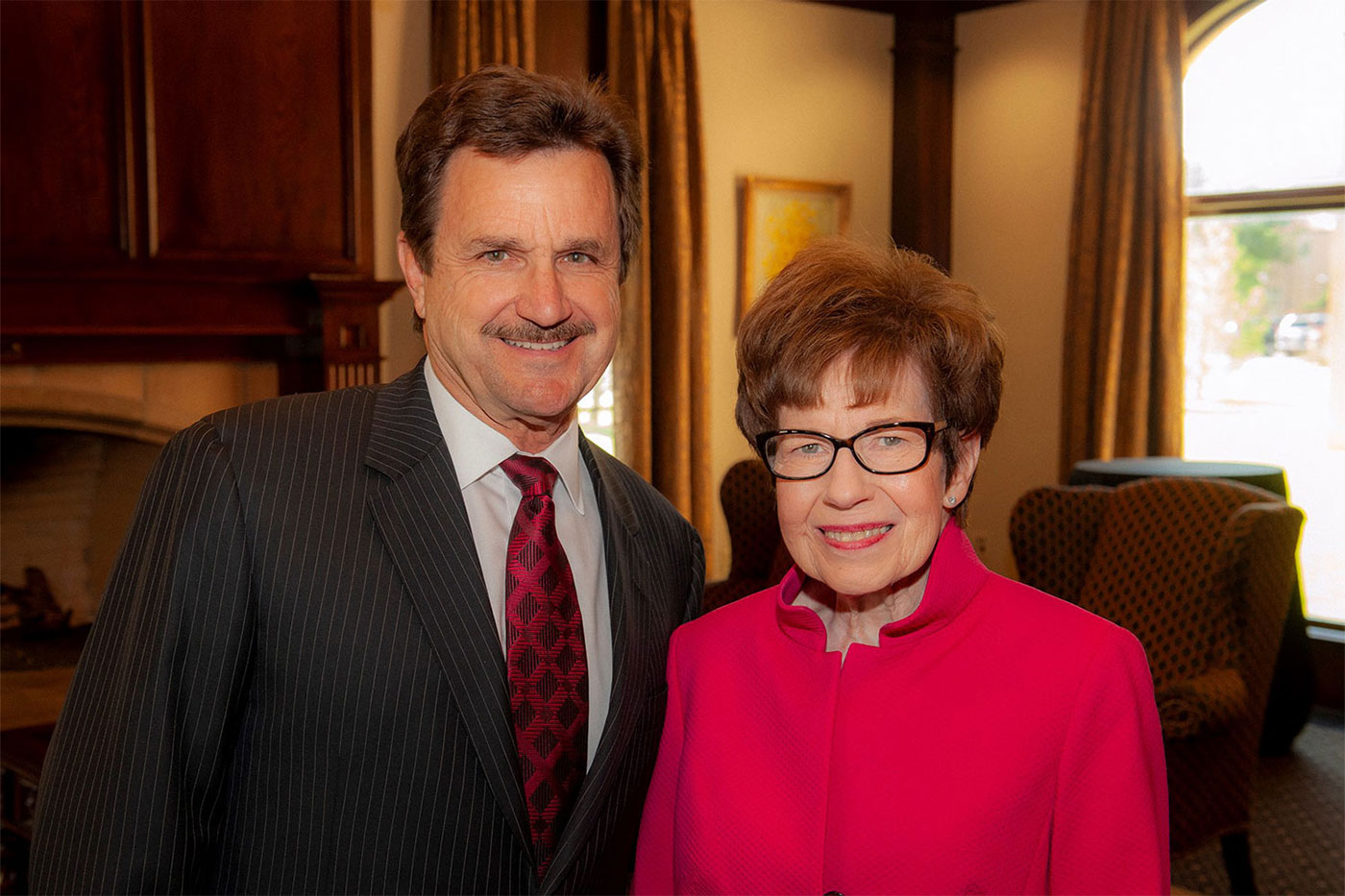
"On these projects, and all projects, I have been blessed with outstanding colleagues, administrators and supporters," she emphasized. "No one person does, really, much of anything alone; it's being able to work with other people to achieve goals that really matters. And then, especially in fundraising, it's the donor that makes the difference!"
When Duncan retired, Haley was asked to report to Schovanec, who she had admired for many years. During her years at Texas Tech, she had the privilege to work closely with 11 presidents and chancellors, and she values each one for their unique contributions to the institution.
"I am proud to be associated with Texas Tech, where there is a spirit of working together to provide quality experiences for our students and to raise the funds that are needed to provide stellar academic programs and the best facilities possible, whether in athletics or academics," Haley said.
Retired, again
Approaching her 75th birthday, and having accomplished so much, Haley decided earlier this year that she was now ready to retire. So on May 31, she made it official.
Of course, she's still planning to be involved. She's agreed to continue volunteering, and she'll still be a member of the new Dean's National Advisory Council for the TCVPA.
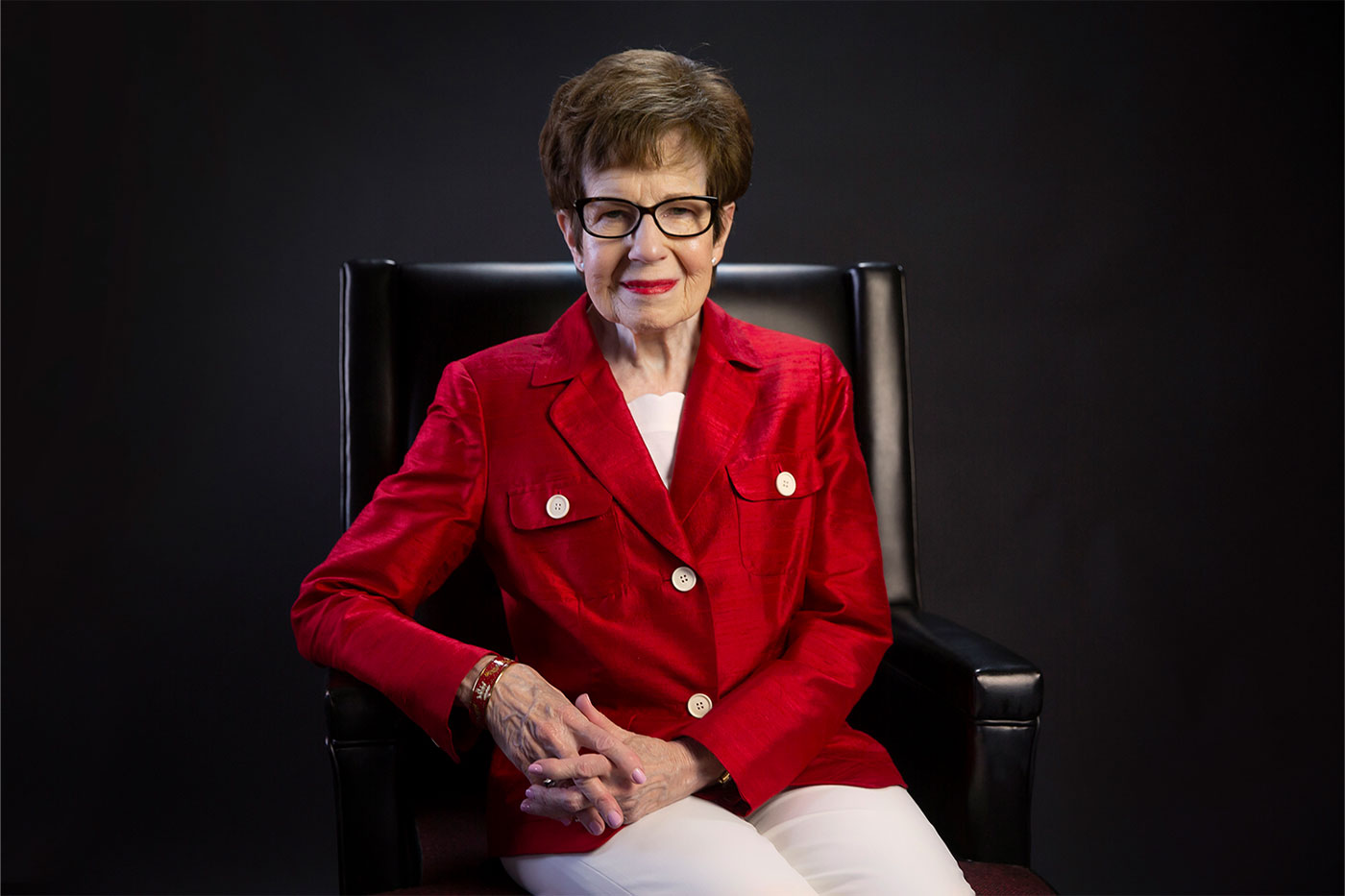
But she's also looking forward to doing a few things she hasn't been able to.
"I want to do some things that I've kind of let slip," she said. "We all need to be healthy and exercise, so I'm going to do a planned exercise program and physical therapy along the way; get a little more sleep – I'm a late-night person, so I probably can never change it completely, but I'll commit to a little more sleep than I have in the past."
And thanks to a parting gift from the TCVPA and Zahler, she's going to pick up an old interest: oil painting.
"I took art lessons when I was a high school student, and I really did love it," she said. "I was better in that art than some of the others. I took piano lessons, dancing lessons, was in the band, played the clarinet, sang in choirs, but I really thought my talent was maybe in the visual arts. Then, I just got away from it.
"When I went to college, I got very involved with campus-wide organizations and leadership roles and pursuing my own studies, which was the main reason I was there," Haley said. "And then my work at Texas Tech and in the community has been consuming. And then after marrying later in life, my husband, Glenn, and I enjoyed time together.
"And so now, I don't have an excuse."
Looking back
Haley came to Texas Tech at age 37. She has now been here for 38 years. Regardless of all that's passed in that time, good and bad, she says she wouldn't change much.
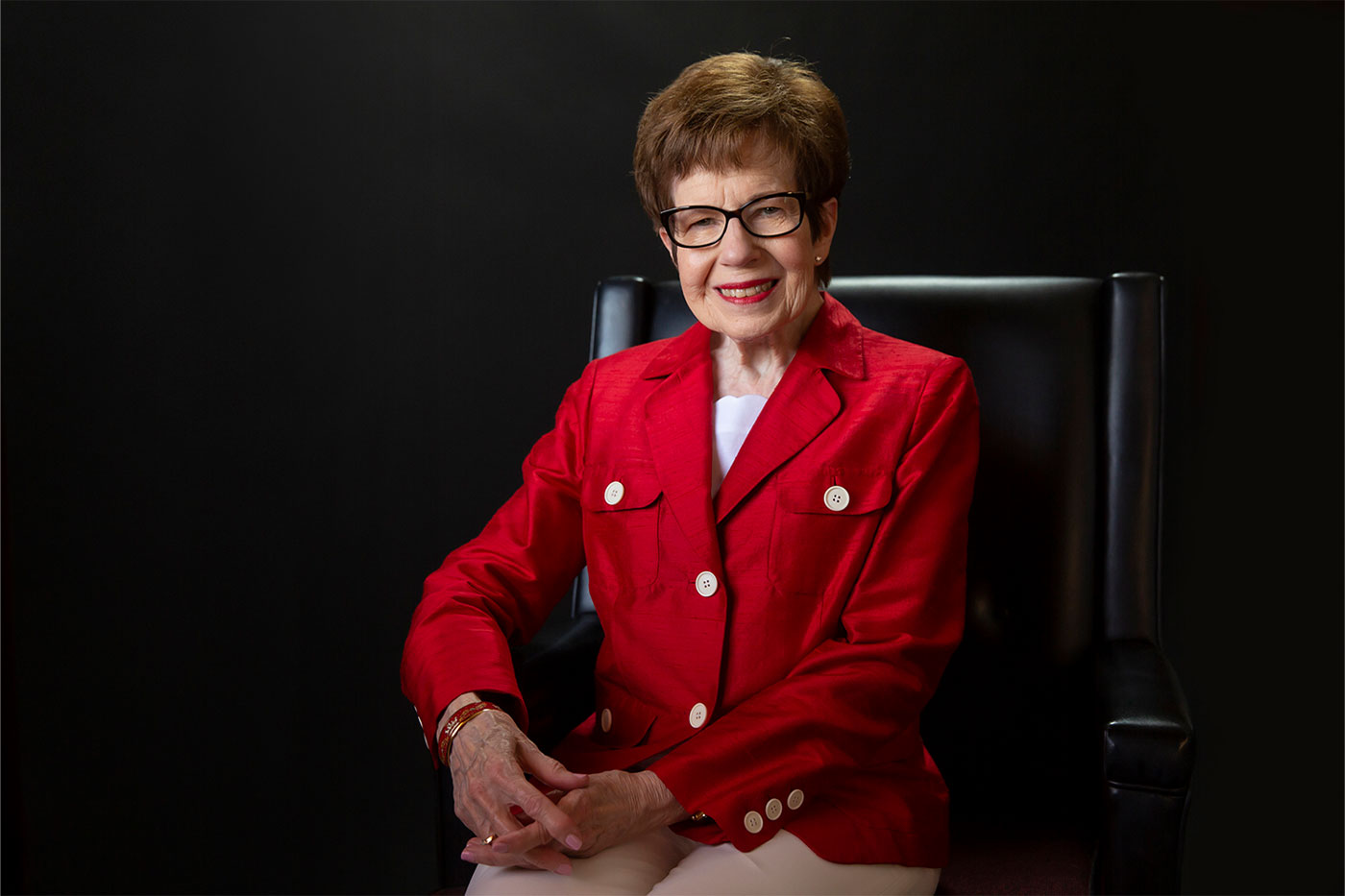
"There are small experiences that didn't turn out exactly like I might have wished at the time, but that's OK; they were part of growth," she said. "Life isn't perfect, and you've got to have some challenges along the way, and you learn to look at them and see what can you learn from that experience. I've really enjoyed almost everything, each experience and every friend!
"When I look around the campus, it has grown and changed so much. But I think we have tried to maintain our interest in each student and trying to, as President Schovanec says, give them a signature experience, particularly related to the community – a signature outreach experience so that students who come here not only learn their subject matter and their discipline, but they also learn they are part of a broader community, and they have a responsibility, when they graduate, to be leaders in their communities and in their professions."
Unquestionably, Haley has played a vital role in that effort, one that doesn't go unnoticed by the administrators who have come after her.
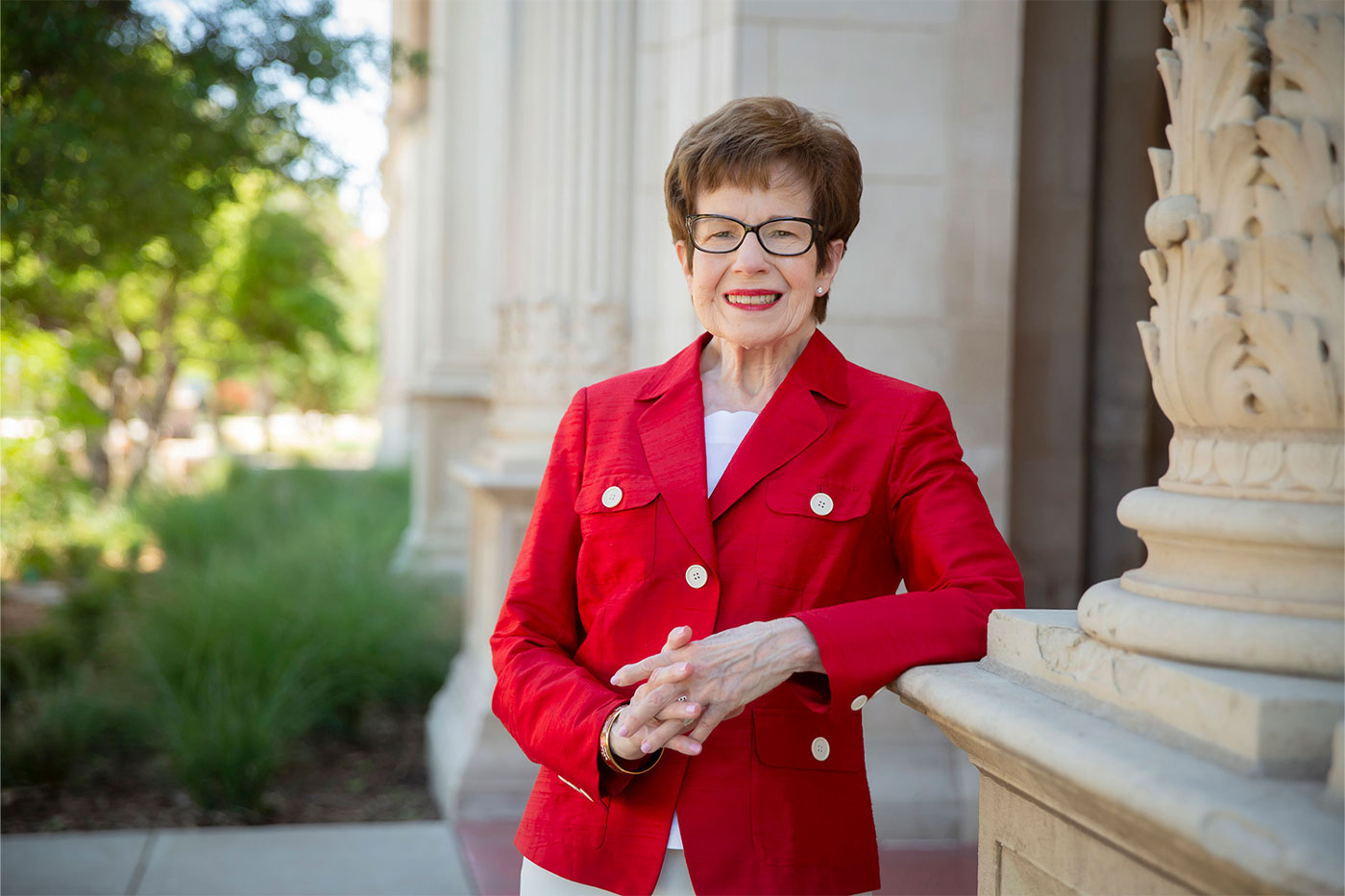
"It has been my great pleasure to work with Bess Haley and witness firsthand the indelible mark she's made on Texas Tech University and the tremendous impact she's had on so many students, faculty and staff," Schovanec said. "Throughout her distinguished career at Texas Tech, she has served the university with an inimitable grace. As dean of what is now the College of Human Sciences to serving as interim president, Bess' contributions extend beyond the roles she fulfilled. I am grateful for her leadership and honored to call her a friend."
While Haley has obviously had an impact on Texas Tech and the people here, they've impacted her as well.
"They hired me when I was young, and I am still learning," she said. "They gave me varied opportunities for leadership. If I had not come, I would have missed out on the greatest journey of my life.
"I'm grateful for all the experiences and proud to be a Red Raider."

